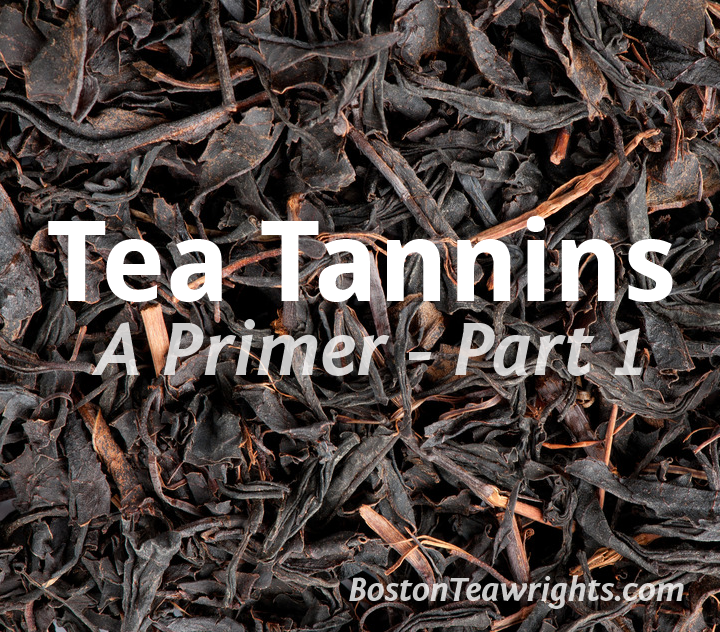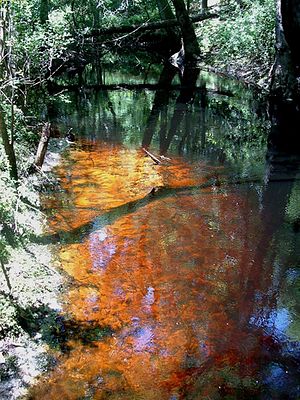
Tea Tannins: An Introduction
Or, Why Write About Tannins
It started with a question.
This post’s inspiration came from a cup of tea, an over-steeped cup of tea. You know that familiar, bitter and astringent mouth feel. We usually know that it’s tea tannins that cause the puckering sensation. So the question came up, “do we really need the all those tannins?”
The short answer is a resounding yes! In fact I will take this a step further and declare that the art of tea craft is the mastery and manipulation of tea tannins. But more on that later.
Anyway, it’s easy to ask this question over an astringent cuppa. What’s not so obvious is that everything we enjoy and benefit from that same cup, basically also comes from tannins.
What Are Tannins
(Photo credit: Wikipedia)
First a bit of chemistry.
So what exactly are tannins? To answer that, we need to talk a bit about chemistry and biology. The word “tannin” is the common name for a group of compounds called polyphenols as found in plants. These polyphenols are astringent and like to bind to proteins, alkaloids and various organic compounds. Once bound up, the compounds precipitate out of solution.
Ok, getting too sciencey here. What does that mean? It means that if you have proteins and certain other things dissolved in a liquid, tannins will snag them and pull them out of the solution, almost like a snowfall, but in a glass of water. This is what they do when you pour milk or lemon juice in tea. And this is why adding those to tea will cut the astringency.
Where are the tannins
Now that we have the basic chemistry down, we move to the next question. Where are the tannins? Tannins are found throughout the parts of plants and in plenty of plant life out there (not just the tea plant). In most cases they occur in the growing portions of plants like stems, leaves and buds.
If you use a microscope to get a good look, you will find that the tannins stay in small pouches inside the cell walls. Here they remain isolated from the rest of the plant until needed. This means they are active during one of three points in a plant cell’s life: cell creation, cell decomposition, or when the cell is attacked.
What do tannins do
Tannins serve a bunch of purposes for plantlife. These purposes range from protective to promoting growth and health. Keep in mind here, I’m referring to what tannins do for the plantlife that produces them. I’m not talking about what tannins do to or for us as humans.
As mentioned earlier, tannins love binding to all sorts of compounds. This is where they get a lot of their use. Proteins, organic compounds, even iron is caught up in the grip of the tannin. In terms of plant protection, this makes them useful as pesticide, herbicide (weeds), antibacterial, antifungal even as an antiviral. Again, this is about plant health not human health. By its binding action it can inhibit proteins and enzymes, destroy them, manipulate cell walls or even inhibit the absorption of key compounds and iron needed for pest growth.
But tannins also promote health and growth. Since tannins occur in higher concentrations in the growing bits of plants, many researchers theorize that they regulate the plant’s growth. On top of that, when leaves and plant bits fall to the ground and decompose, they release their tannins into the soil. The binding action now promotes soil health by possibly locking out aluminum and heavy metals from being absorbed into the plant, while helping break down proteins in the soil to release their nutrients.

(Photo credit: Wikipedia)
Ever heard of a blackwater river? It’s basically a river that’s tea colored because of the plant material that’s decomposing in it. The tannins are discoloring the water, not necessarily bacteria.
So basically, tannins are EVERYWHERE. You find them in healthy soil, and you even find them in wooded rivers (blackwater rivers) where leaves and branches decompose.
But not all tannins are the same
OK, so you just read about all this stuff that tannins do for plants, and you may have heard how tannins are used in tanning leather. This makes them sounds toxic, or good, or bad, or I don’t know what. As Douglas Adams wrote, “Don’t Panic”. Not all tannins are the same. Remember when I wrote how “Tannin” is a general word for plant polyphenols? That means it’s a broad group of chemicals with some similar properties, but they aren’t necessarily the same.
Here’s an example of another broad group. Fats. We know that trans fats and hydrogenated fats are terrible for you. We also know that monounsaturated fats (like in olive oil), and omega-3’s (like in seafood) are good for you. The same idea goes for tannins. Some are bad, some are good. Tea tannins, fortunately, are some of the tannins that aren’t harmful to humans. And if you’re still unsure, just think about the thousands of years that people have been drinking tea and living full lives.
A teaser for the next post
Well that was a long blog post. Reading up on tannins revealed a lot of information. So I’m splitting the topic across posts. Follow here for the next installment when I write about the tannins specifically in tea. It’s a good read, promise!
Discuss this post on our subreddit
[related-posts]
